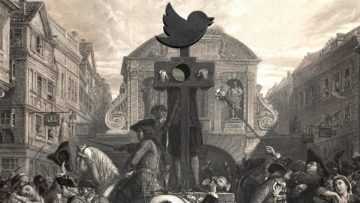Anne Applebaum in The Atlantic:
 “It was no great distance, in those days, from the prison-door to the market-place. Measured by the prisoner’s experience, however, it might be reckoned a journey of some length.”
“It was no great distance, in those days, from the prison-door to the market-place. Measured by the prisoner’s experience, however, it might be reckoned a journey of some length.”
So begins the tale of Hester Prynne, as recounted in Nathaniel Hawthorne’s most famous novel, The Scarlet Letter. As readers of this classic American text know, the story begins after Hester gives birth to a child out of wedlock and refuses to name the father. As a result, she is sentenced to be mocked by a jeering crowd, undergoing “an agony from every footstep of those that thronged to see her, as if her heart had been flung into the street for them all to spurn and trample upon.” After that, she must wear a scarlet A—for adulterer—pinned to her dress for the rest of her life. On the outskirts of Boston, she lives in exile. No one will socialize with her—not even those who have quietly committed similar sins, among them the father of her child, the saintly village preacher. The scarlet letter has “the effect of a spell, taking her out of the ordinary relations with humanity, and enclosing her in a sphere by herself.”
We read that story with a certain self-satisfaction: Such an old-fashioned tale! Even Hawthorne sneered at the Puritans, with their “sad-colored garments and grey steeple-crowned hats,” their strict conformism, their narrow minds and their hypocrisy. And today we are not just hip and modern; we live in a land governed by the rule of law; we have procedures designed to prevent the meting-out of unfair punishment. Scarlet letters are a thing of the past.
More here.
